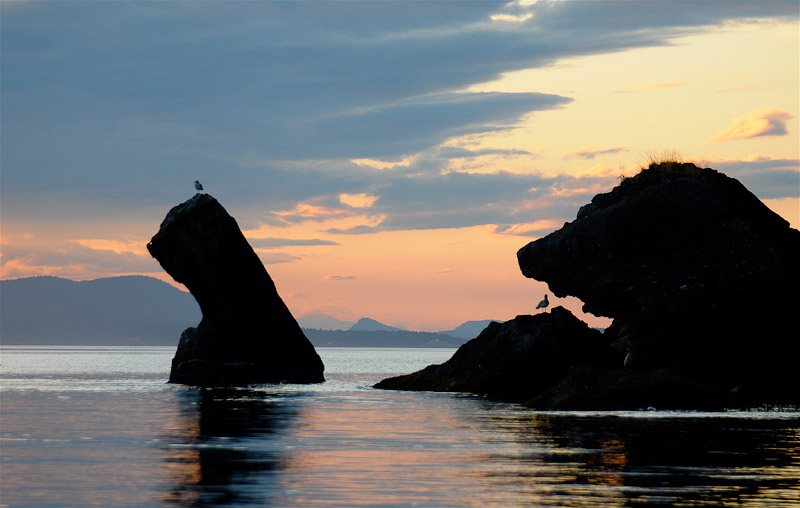CONSERVATION IN FOCUS (II):
THE SALISH SEA & SAN JUAN ISLANDS
September 30-October 7, 2012 8 Days/7 Nights
Bob Rozinski & Wendy Shattil, Jennifer Hahn, Audrey Benedict and the M/V Catalyst Crew
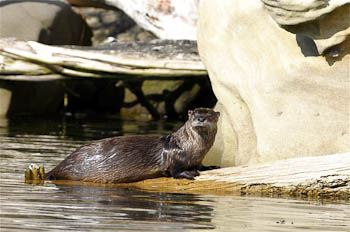 Thousands of years before Europeans first arrived in the Pacific Northwest, the Coastal Salish people flourished along the shores of one of the most biologically rich inland seas in the world— the Salish Sea. Named in honor of those first inhabitants, the Salish Sea straddles the Canadian border and includes Washington's Puget Sound, the Strait of Juan de Fuca, the San Juan Archipelago, and British Columbia's Gulf Islands and the Strait of Georgia. Connected to the Pacific Ocean primarily via the Strait of Juan de Fuca, the Salish Sea receives an almost constant influx of nutrientrich freshwater from British Columbia's Fraser River, the Skagit, and the many smaller rivers of Washington's mainland—the essential building blocks for the sea's extraordinary biodiversity. The strong currents and extreme tidal exchanges that typify the Salish Sea create optimal conditions for nutrient upwelling and for the proliferation of the photosynthetic plankton that form the basis of the marine food chain. The Salish Sea is Thousands of years before Europeans first arrived in the Pacific Northwest, the Coastal Salish people flourished along the shores of one of the most biologically rich inland seas in the world— the Salish Sea. Named in honor of those first inhabitants, the Salish Sea straddles the Canadian border and includes Washington's Puget Sound, the Strait of Juan de Fuca, the San Juan Archipelago, and British Columbia's Gulf Islands and the Strait of Georgia. Connected to the Pacific Ocean primarily via the Strait of Juan de Fuca, the Salish Sea receives an almost constant influx of nutrientrich freshwater from British Columbia's Fraser River, the Skagit, and the many smaller rivers of Washington's mainland—the essential building blocks for the sea's extraordinary biodiversity. The strong currents and extreme tidal exchanges that typify the Salish Sea create optimal conditions for nutrient upwelling and for the proliferation of the photosynthetic plankton that form the basis of the marine food chain. The Salish Sea is 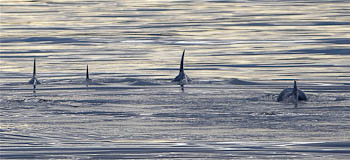 home to all five species of Pacific salmon, as well as sea-run steelhead and bull trout. It also provides critical habitat for marine mammals such as migrating grey whales, resident and transient populations of orcas, harbor seals, Steller and California sea lions, and river otters. At least 165 species of birds depend on the Salish Sea and adjacent terrestrial habitats for survival. home to all five species of Pacific salmon, as well as sea-run steelhead and bull trout. It also provides critical habitat for marine mammals such as migrating grey whales, resident and transient populations of orcas, harbor seals, Steller and California sea lions, and river otters. At least 165 species of birds depend on the Salish Sea and adjacent terrestrial habitats for survival.
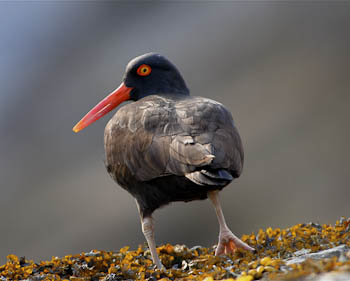 The San Juan Archipelago, which lies at the heart of the Salish Sea, provides the perfect setting for our second Conservation in Focus workshop in the Pacific Northwest. Life in the San Juan Islands is governed by the sea's rhythms—their extraordinary biological richness attributed to the rain shadow cast by the Olympic Mountains and the greater diversity of habitats available to plants and animals in these islands than occurs along the wetter mainland coast. Not surprisingly, the San Juans are home to several "giants" of the marine world, including the North Pacific giant octopus, plumose anemone, giant red sea urchin, and the geoduck, largest of the burrowing clams. Of the many resident and wintering seabirds and sea ducks we'll see—murrelets, pigeon guillemots, common murres, rhinoceros auklets, scoters, and harlequin ducks—large numbers will have just arrived from their North Pacific breeding areas. The San Juan Archipelago, which lies at the heart of the Salish Sea, provides the perfect setting for our second Conservation in Focus workshop in the Pacific Northwest. Life in the San Juan Islands is governed by the sea's rhythms—their extraordinary biological richness attributed to the rain shadow cast by the Olympic Mountains and the greater diversity of habitats available to plants and animals in these islands than occurs along the wetter mainland coast. Not surprisingly, the San Juans are home to several "giants" of the marine world, including the North Pacific giant octopus, plumose anemone, giant red sea urchin, and the geoduck, largest of the burrowing clams. Of the many resident and wintering seabirds and sea ducks we'll see—murrelets, pigeon guillemots, common murres, rhinoceros auklets, scoters, and harlequin ducks—large numbers will have just arrived from their North Pacific breeding areas.
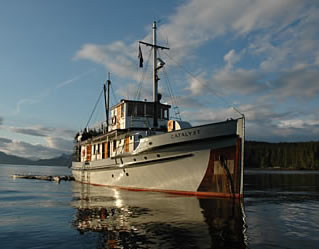 Once again, our "classroom" afloat is the classic M/V Catalyst, a 76-foot wooden boat built in 1932 as the floating laboratory for the University of Washington. She carries 12 passengers in superb comfort and is equipped with a full complement of sea kayaks and a motorized inflatable to enable explorations both near and far. Sea kayaks allow a more intimate, seal's-eye view of the marine world—the perfect platform for aspiring conservation photographers. Our leaders, Wendy Shattil and Bob Rozinski, are joined by naturalist Jenny Hahn, one of the Northwest's foremost guides and an award-winning author. Special guest lecturers, Dr. Joe Gaydos, Director of the SeaDoc Society, and Dr. Russel Barsh and botanist Madrona Murphy of Kwiaht (Center for the Historical Ecology of the Salish Sea), will share the latest research focused on Salish Sea ecosystems. Over 7 million people live in the drainage basin that nourishes the Salish Sea. The impacts of burgeoning population, global warming, ocean acidification, pollution, logging, fishing practices and associated seabird by-catch, and fish farming all pose environmental challenges for the future. Delivering a strong conservation message requires a thorough understanding of your subject—as well as a sense of photographic integrity and environmental stewardship. Collectively, we'll create a photo book that truly captures the essence of the Salish Sea region—as well as the challenges looming on the horizon. Refine your photographic skills, be inspired, and learn how to make a conservation difference with your images! Once again, our "classroom" afloat is the classic M/V Catalyst, a 76-foot wooden boat built in 1932 as the floating laboratory for the University of Washington. She carries 12 passengers in superb comfort and is equipped with a full complement of sea kayaks and a motorized inflatable to enable explorations both near and far. Sea kayaks allow a more intimate, seal's-eye view of the marine world—the perfect platform for aspiring conservation photographers. Our leaders, Wendy Shattil and Bob Rozinski, are joined by naturalist Jenny Hahn, one of the Northwest's foremost guides and an award-winning author. Special guest lecturers, Dr. Joe Gaydos, Director of the SeaDoc Society, and Dr. Russel Barsh and botanist Madrona Murphy of Kwiaht (Center for the Historical Ecology of the Salish Sea), will share the latest research focused on Salish Sea ecosystems. Over 7 million people live in the drainage basin that nourishes the Salish Sea. The impacts of burgeoning population, global warming, ocean acidification, pollution, logging, fishing practices and associated seabird by-catch, and fish farming all pose environmental challenges for the future. Delivering a strong conservation message requires a thorough understanding of your subject—as well as a sense of photographic integrity and environmental stewardship. Collectively, we'll create a photo book that truly captures the essence of the Salish Sea region—as well as the challenges looming on the horizon. Refine your photographic skills, be inspired, and learn how to make a conservation difference with your images!
Price: $2,550 (includes a $500 deposit)
Group Size: 12
Trip Rating: 2-3
Price Includes: 5 nights/6 days aboard the M/V Catalyst, all meals and beverages (including wine and beer), 2 nights' lodging (September 30 & October 6 in Friday Harbor on San Juan Island), two group dinners ashore, all instruction by our photographic and naturalist leaders, guest lecturers, full sea kayak outfitting, Catalyst's four-person crew and all gratuities, a copy of our group-produced photo book, and a copy of Jenny's Pacific Feast. The price quoted is per person based on double occupancy. The Catalyst has only one single-berth cabin. A single supplement of $250 is required of any participant preferring non-shared hotel accommodations or for whom we have no roommate.
Does not include roundtrip airfare or travel from your point of departure to Friday Harbor, San Juan Island. Seminar begins with dinner and lodging in Friday Harbor on September 30 and concludes with dinner and lodging on October 6.
Need more information? Visit the Pacific Catalyst website at www.pacificcatalyst.com for boat pictures, cabin details, interior spaces and amenities, and crew biographies. |
